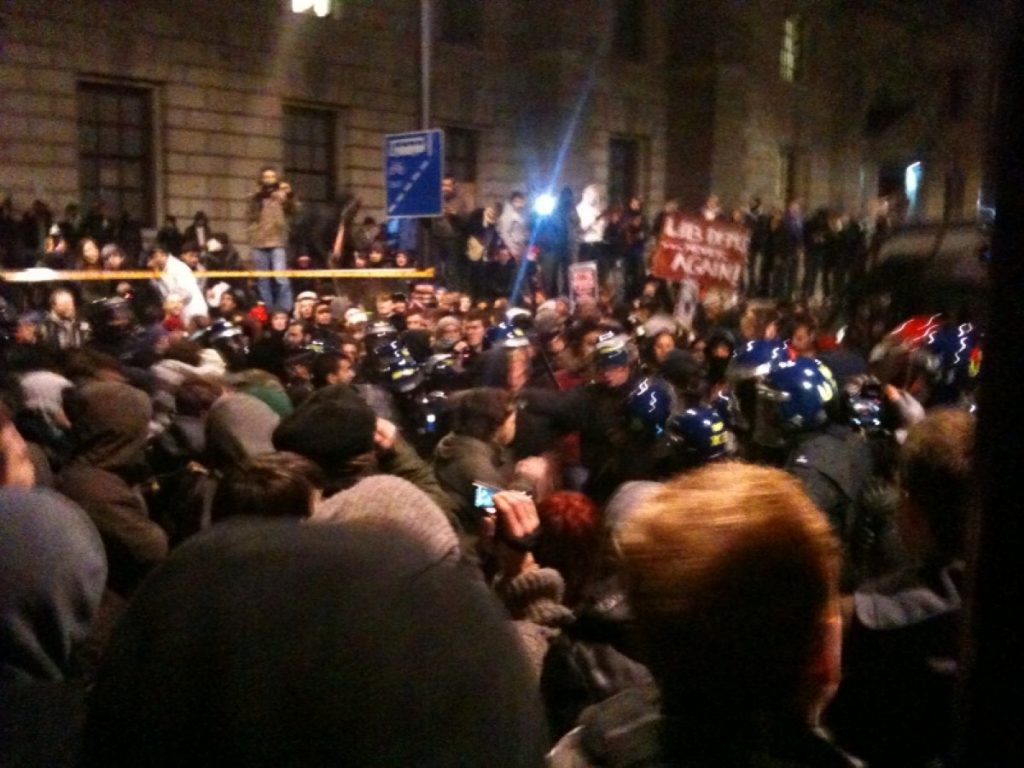Met chief mulls protest ban
By Ian Dunt
Future student protests could be banned, under plans being considered by police in the wake of violent demonstrations in central London.
Metropolitan Police commissioner Sir Paul Stephenson said he refused to rule out banning future marches yesterday.
“It is one of the tactics we will look at and something we will keep under review, and if we think it is the right thing to do then we will do it,” he said.


The comments come after a series of marches over the rise in tuition fees caused havoc in London. The building housing Tory HQ in Millbank was severely damaged, Trafalgar Square subject to a mass arrest, Parliament Square was the subject of a violent demonstration and the car carrying Prince Charles and Camilla was attacked.
But protestors also cite police violence as a cause of the disorder. A video circulated on YouTube appears to show police dragging cerebral palsy sufferer Jody McIntyre being pulled from his wheelchair by policemen and dragged across the street.
Student Alfie Meadows was allegedly repeatedly hit on the head by a baton, leading to a three hour operation on the evening of the vote.
Sir Paul said the Public Order Act allowed him to ask the home secretary to ban marches, although he conceded that using the power could worsen the situation.
“When you have got people willing to break the law in this way, what is the likelihood of them obeying an order not to march or complying with conditions on a demonstration?” he asked.
“Sometimes putting that power in could just be inflaming the situation further.”
NUS president Aaron Porter responded: “Peaceful protest is an integral part of our heritage and it is the responsibility of the police to help facilitate that.”
Actual demonstrations cannot be banned, but marches can, meaning the police must allow groups to congregate in a particular area but can control whether they move from one area to another.
The Met says the tuition fees vote protest was worsened when a significant number of
demonstrators broke away from the agreed route and remained in Parliament Square.
Police sources insist the exit through Whitehall remained open throughout the day but this is flatly contradicted by eyewitnesses.
Many critics point to the use of the containment strategy – known as ‘kettling’ – as a counterproductive measure which tends to further enrage protestors.
Others believe the Met should consider tougher methods, including water cannons and snatch squads to single out trouble makers.
It is likely that historical monuments will be boarded up at future demonstrations to prevent graffiti.









